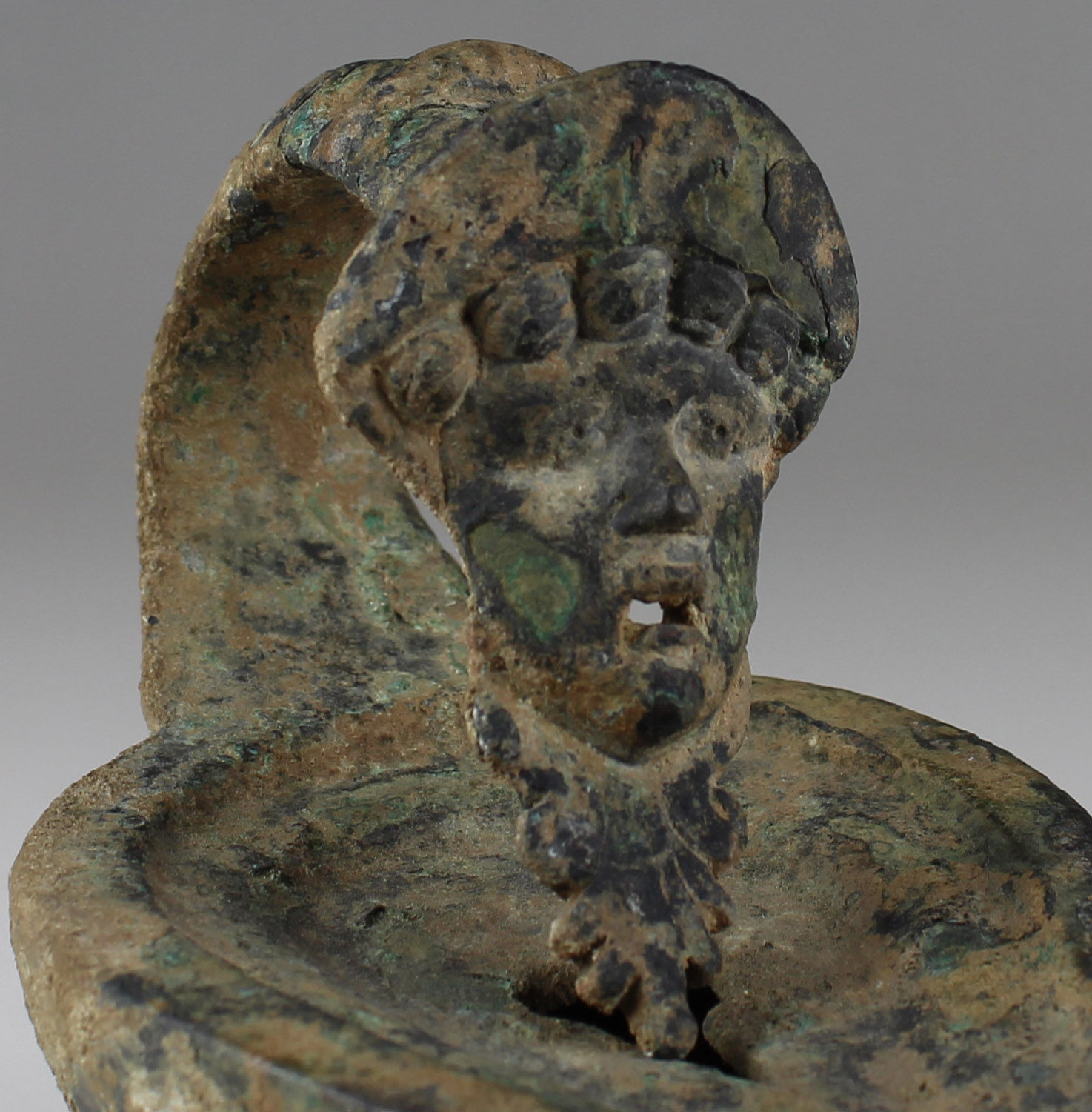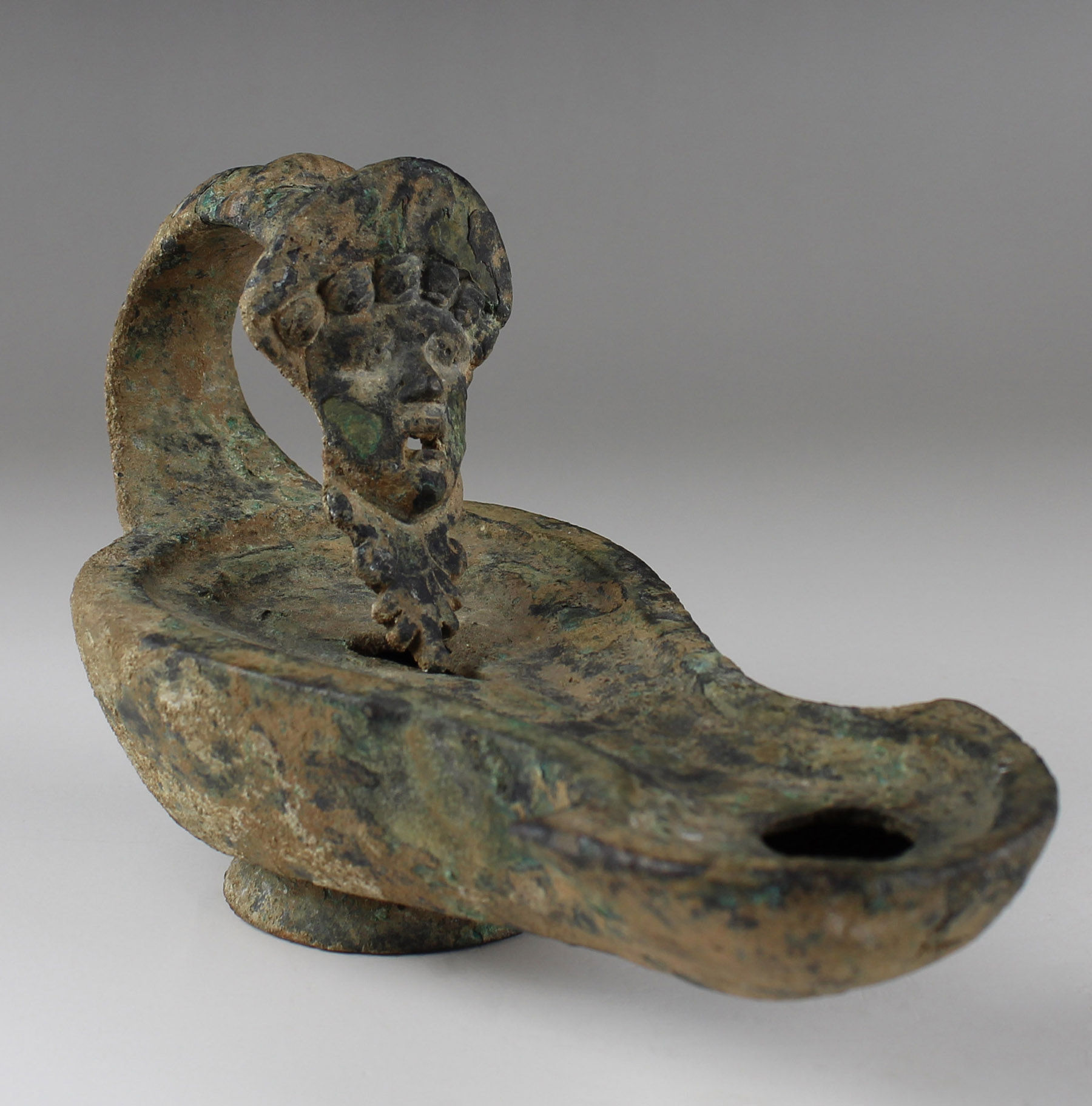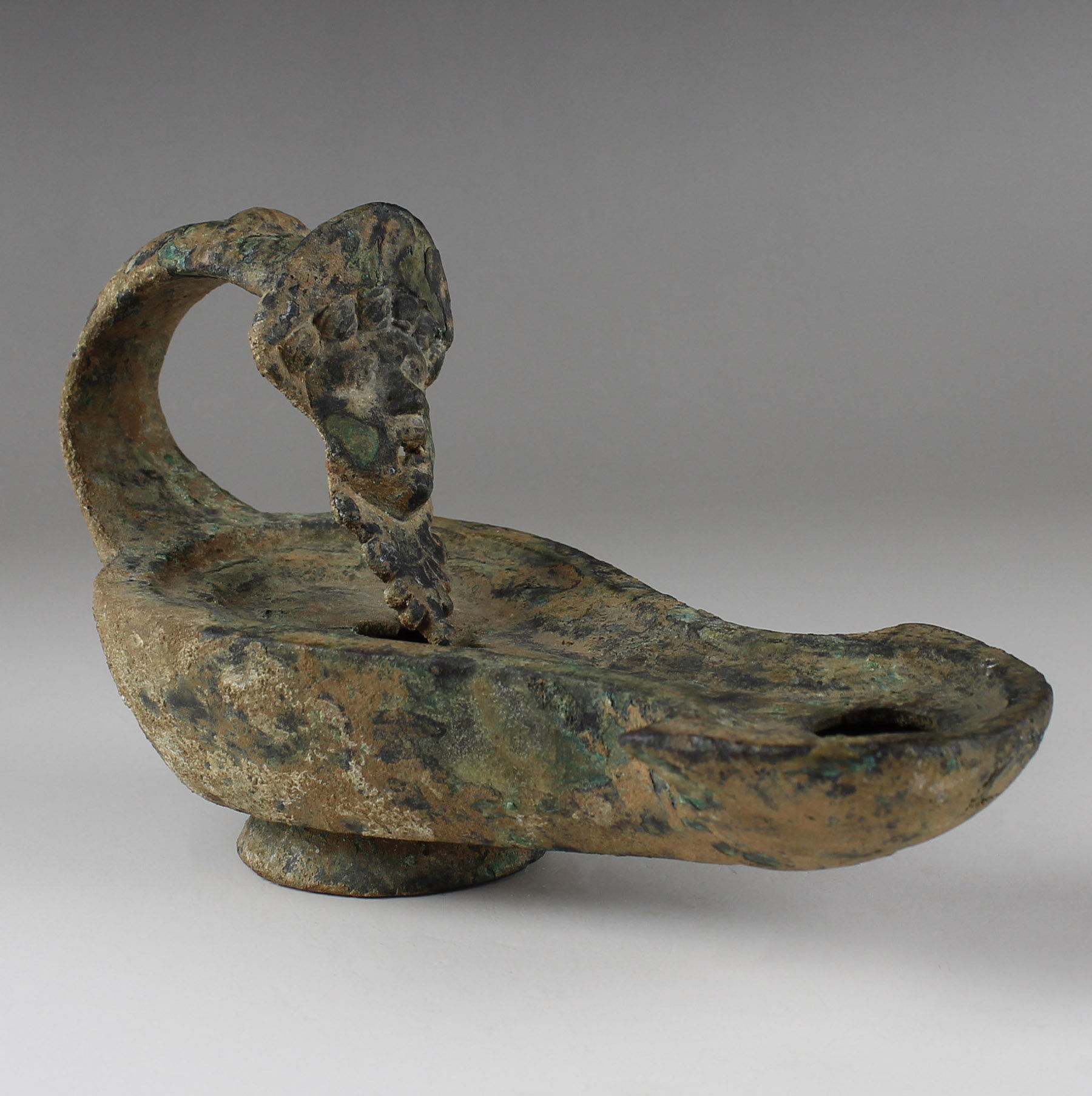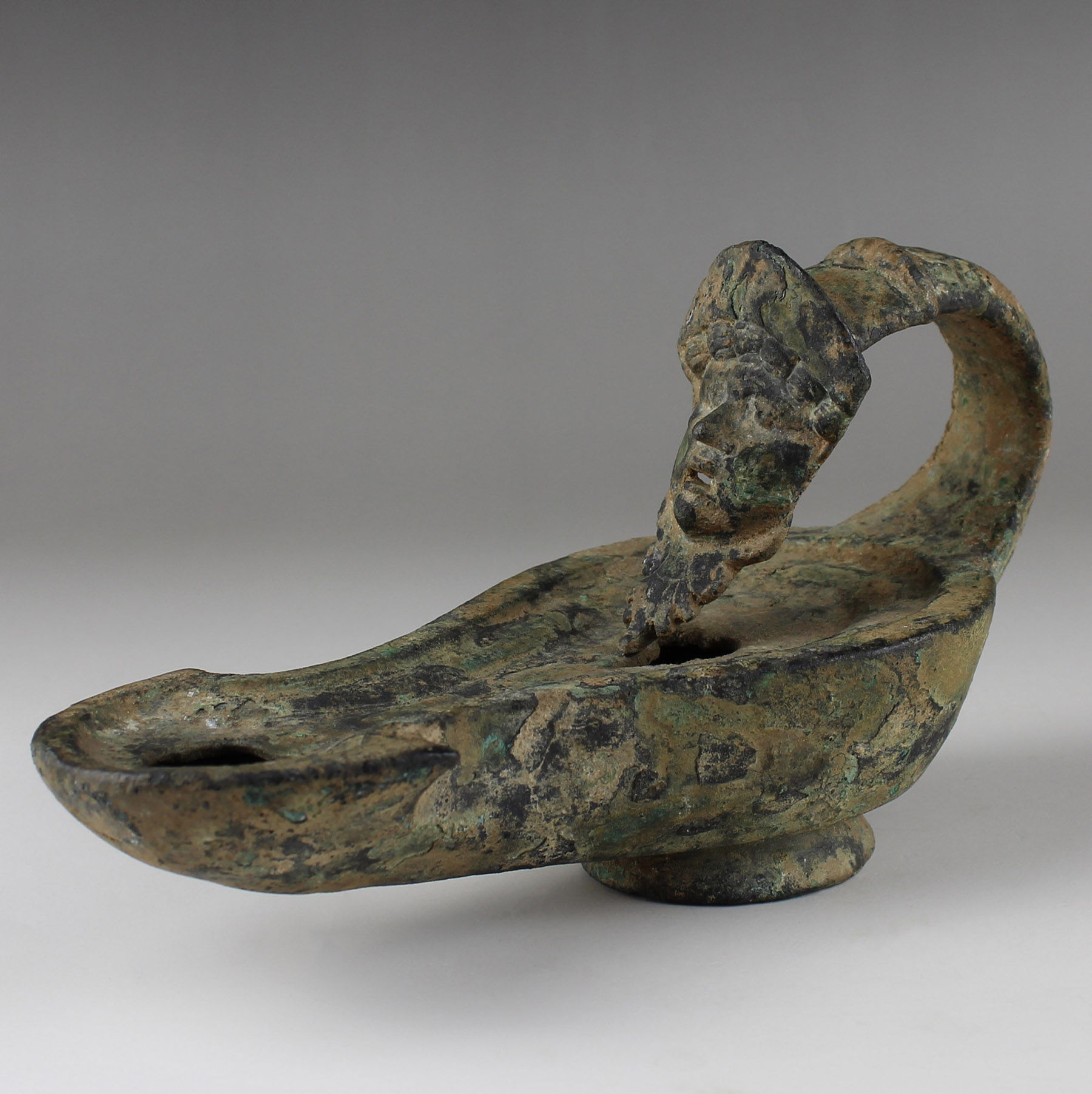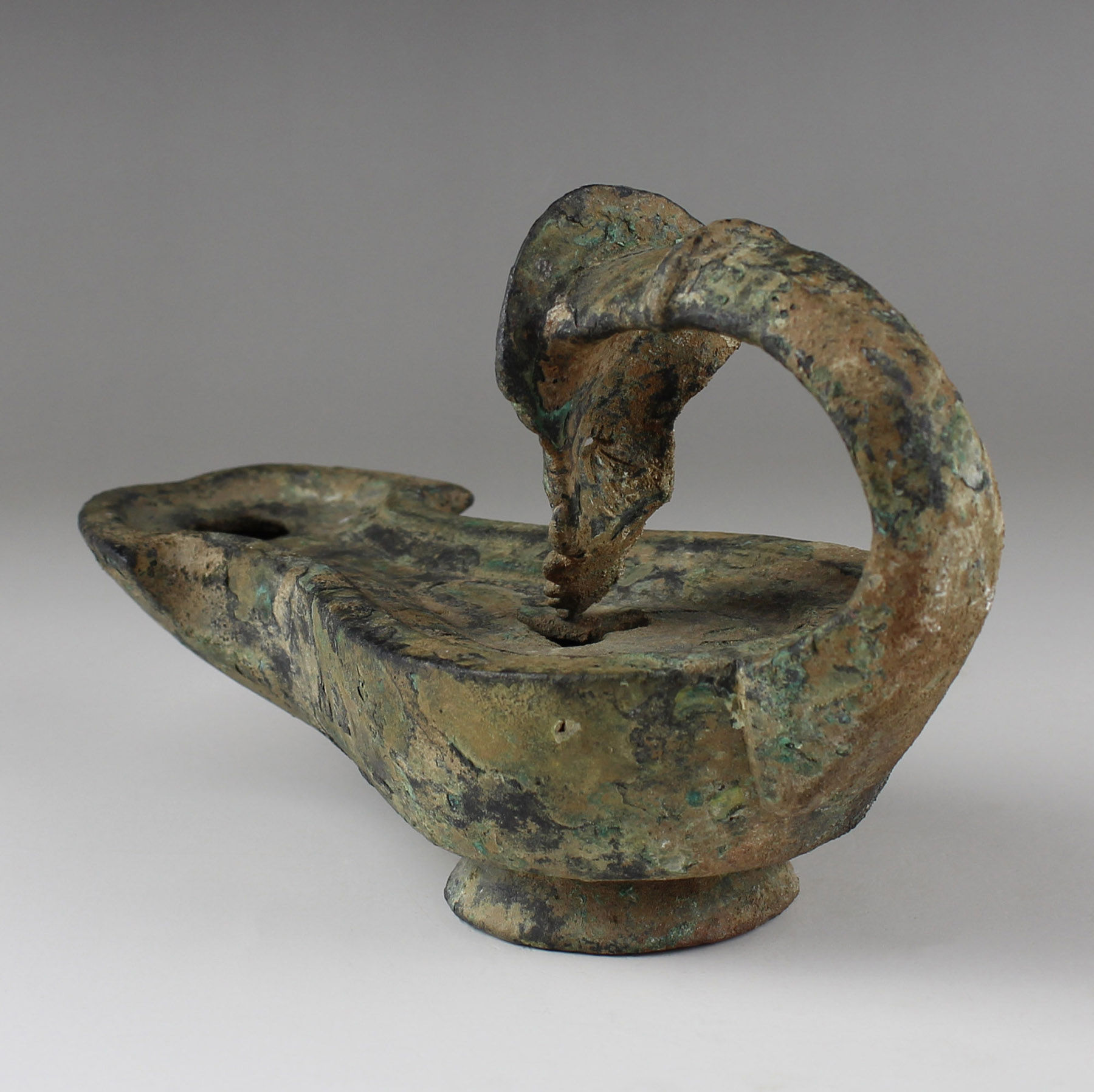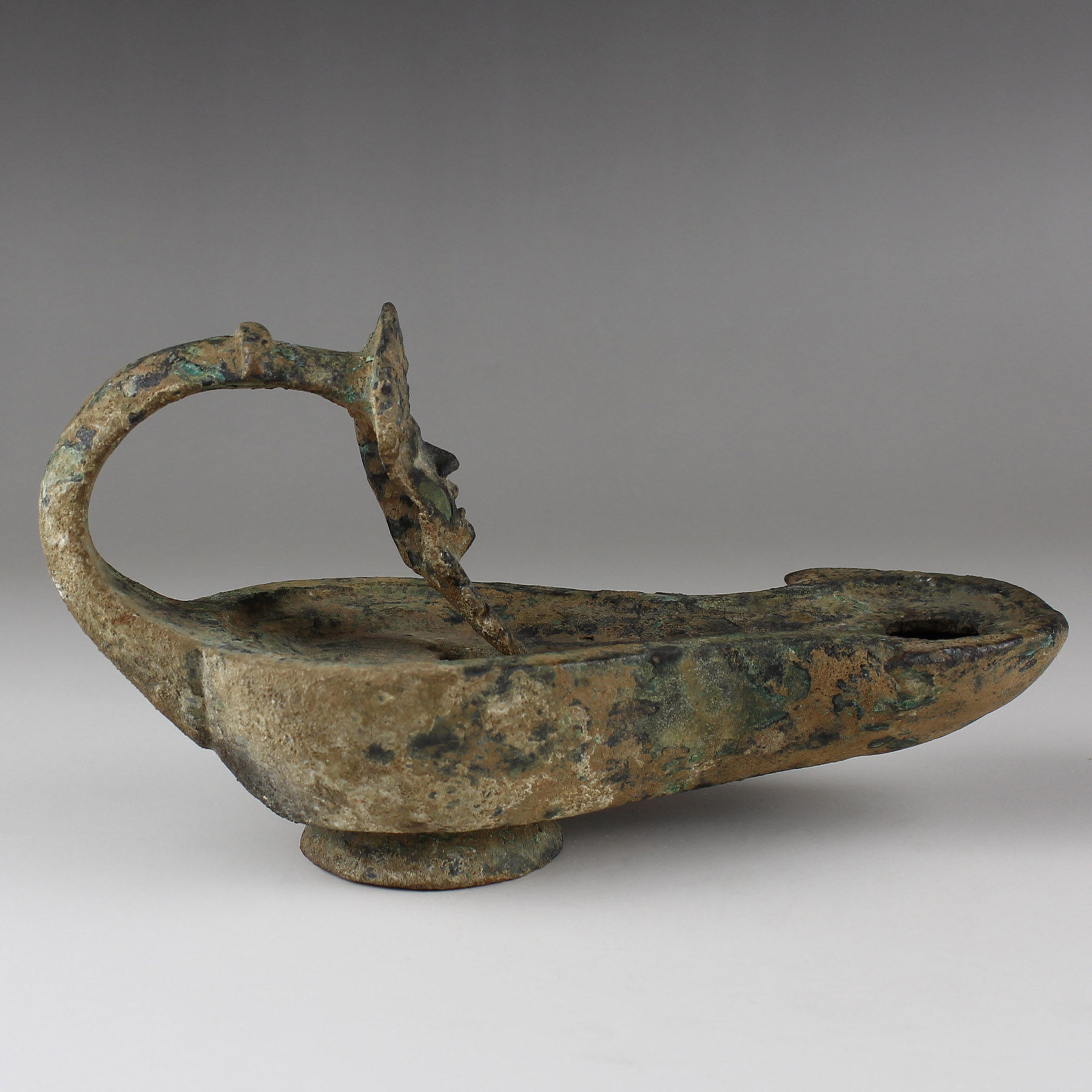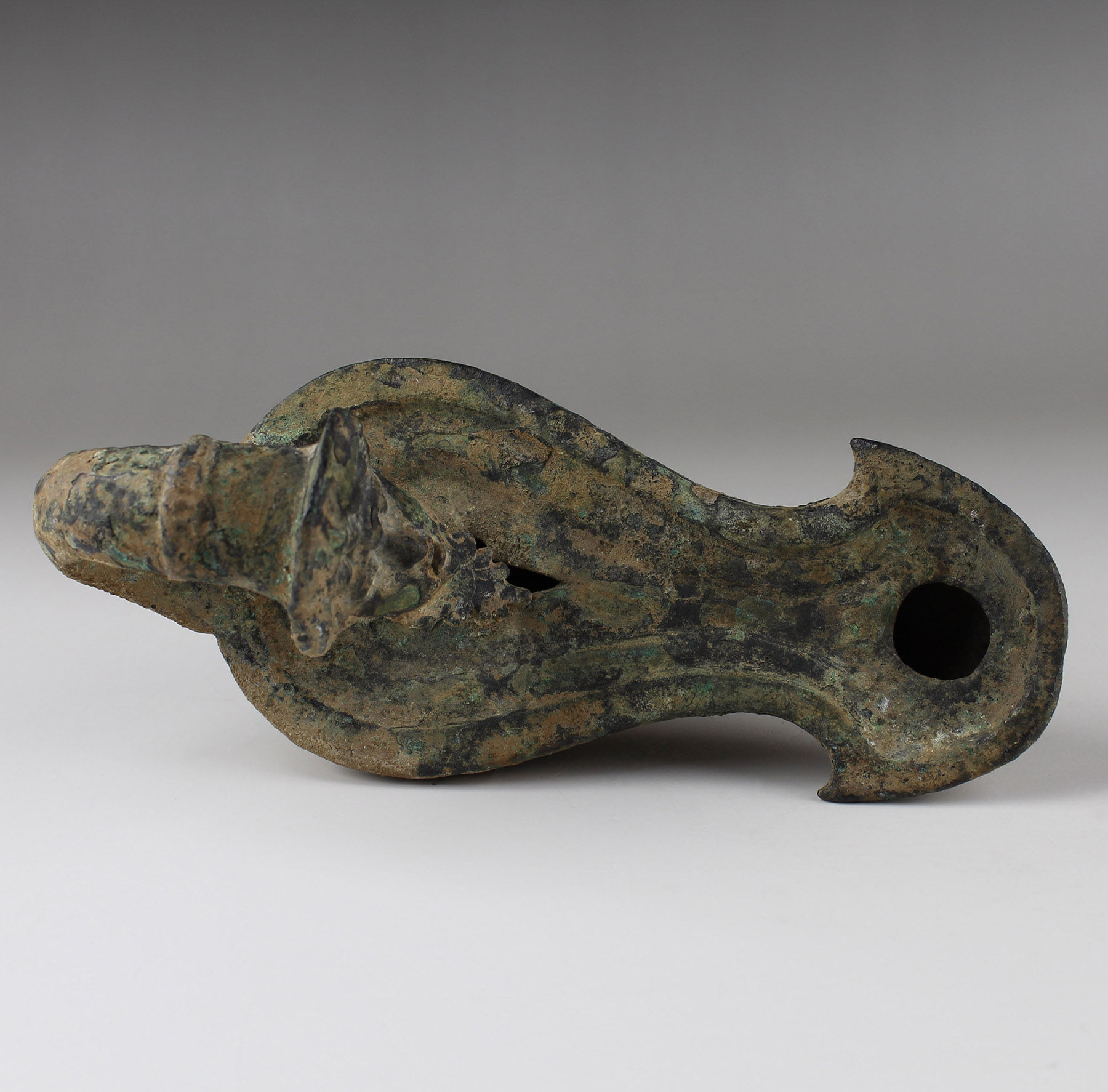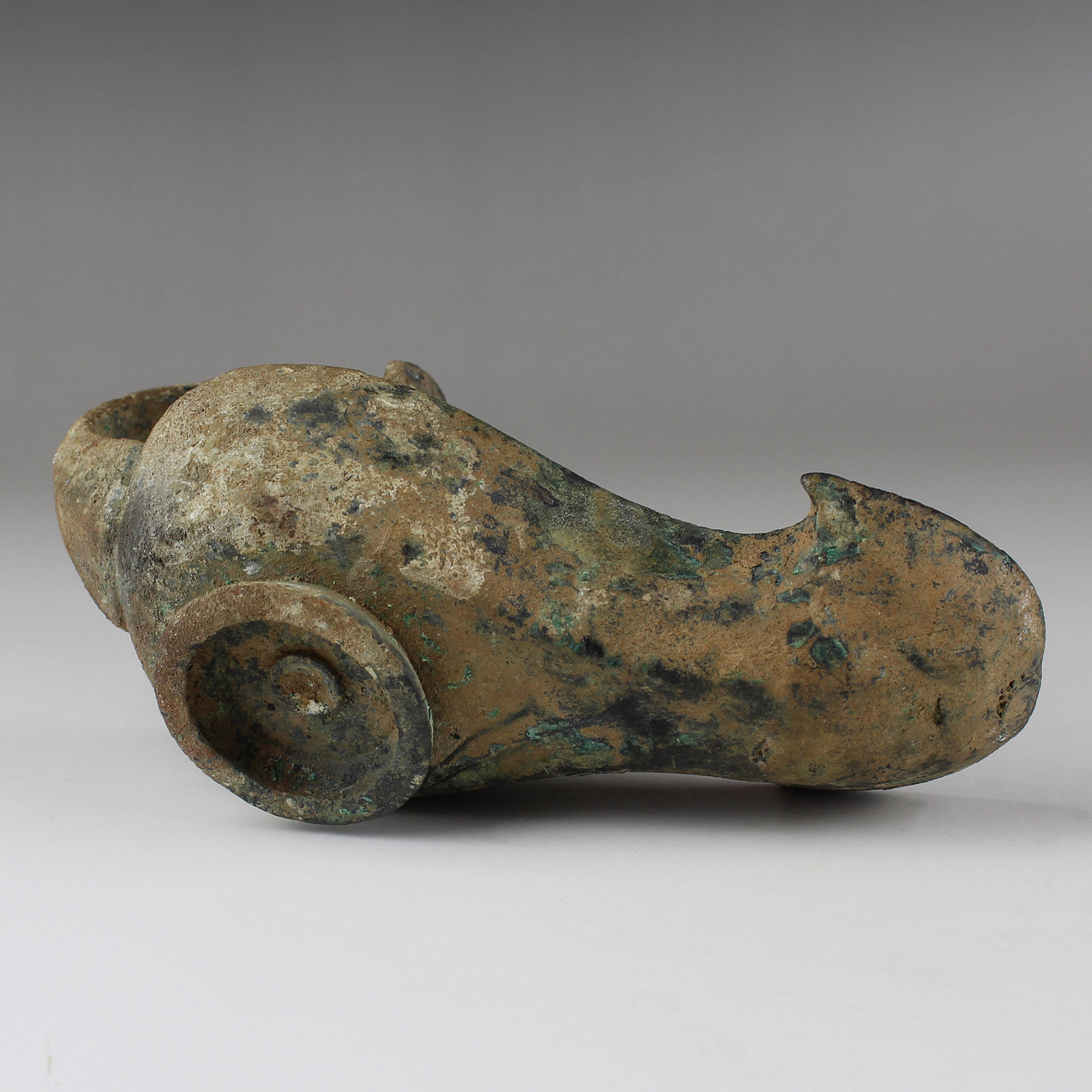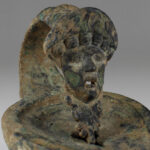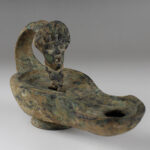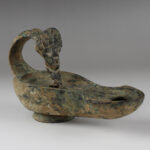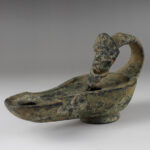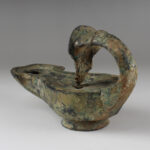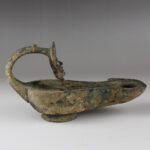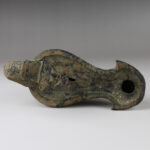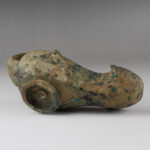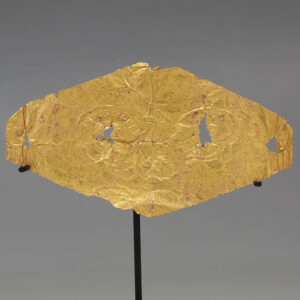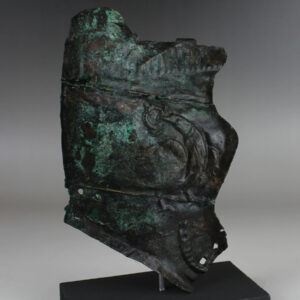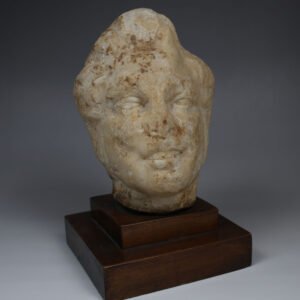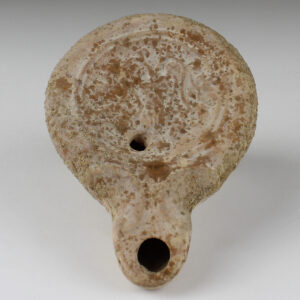Description
| ITEM | Oil lamp with theatre mask handle |
| MATERIAL | Bronze |
| CULTURE | Roman |
| PERIOD | 1st Century A.D |
| DIMENSIONS | 90 mm x 73 mm x 165 mm |
| CONDITION | Good condition |
| PROVENANCE | Ex American private collection, Connecticut, acquired during the 1980’s |
The theatre mask was a staple to Greek and Roman theatre. This gave the actors their identity during their performances. It also allowed one person to play multiple roles in one show. The masks were predominantly used by actors. The theater mask was a popular devices in theatrical performances as it conveyed emotion to far-away audiences in the amphitheater. The theater mask portrayed very expressive faces in order to emphasis the emotions being shown.
The mask is used to display an expression of emotion, the carving of these features into stone helps convey the emotion the actor aims to express. The mask is fashioned as to show a look of shock, surprise or awe, as seen by the gaping mouth and wide eyes. It can be assumed that from the short hair and masculine features that the mask was meant to portray a male.
The importance of this mask in Greek society was so the actor could express emotion and create a character for audiences. Theater in Greek culture was an extraordinarily important and was a primary source of entertainment. It was seen as a way of investigating further into the world they lived and the meaning of humanity. The Romans had a tendency to adopt greek traditions and artifacts into their own culture. In this case, the inclusion of theater masks in a domestic sphere, highlights the Roman admiration for Greek plays and an attempt to create a theater-like environment for the home. Masks were often utilized as a form of decoration in houses, garlands, or gardens to bring elements of the theater into a domestic space. Later on, they even began to be incorporated in Roman paintings.


